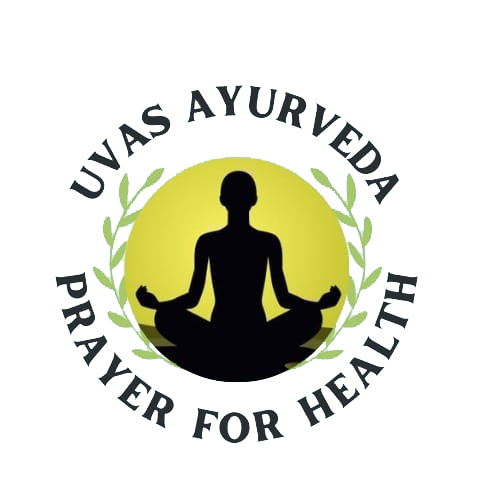Leech Therapy is an ancient and advanced practice in Ayurveda. Raktha mokshana or bloodletting is one of the panchakarma treatments in Ayurveda and leech therapy is one among the bloodletting theropy. It uses leeches (Hirudo medicinalis) to draw out impure blood from a patient through a specially-made incision. Only the blood from the infected area is drawn out this way.
Jalaukaavacharna Karma (Leech therapy) is considered as the ideal method to expel out the vitiated blood safely, quickly, and effectively. Application of medicinal leech reportedly increases blood flow within congested tissue via active feeding and indirectly by passive bleeding from leech bite offer detachment.
Ancient Egyptian, Indian, Greek and Arab physicians used leeches for a wide range of diseases starting from the conventional use for bleeding to systemic ailments, such as skin diseases, nervous system abnormalities, urinary and reproductive system problems, inflammation, and dental problems.
Each leech can consume about 5 to 10 ml of blood at each feeding, almost 10 times its own weight. They have three jaws and a hundred teeth. As they bite, they inject an anaesthetic into the skin and their saliva contains anticoagulants which stop the blood clotting.
There are two types of leaches
- Poisonous
- Non poisonous
Non poisonous leaches are used for the treatment. The selection of the leeches has to be done carefully as the use of poisonous leeches results in adverse effects. The various toxic symptoms that developed due to therapeutic use or accidental bite of Savisha Jaloka were Svayathu (inflammation), Atimatra Kandu (excessive itching), Murcha (unconsciousness), Jwara (febrile state), Daha (burning sensation), Chardi (vomiting), Mada (confusion) and Sadana (lethargy).
These leeches are stored in a sterile container with non-chlorinated water. The water of the containers is routinely changed every day or on alternate day depending on the presence of turbidity in the containers. The number of leeches should not be more than fifty for a container of ten liters capacity. These containers are placed in cold dark place.
The scar left by the leech bites resembles the mercedes-benz emblem. The posterior sucker is used mainly for leverage purposes. The successive attachment and detachment of these suckers help in movement of leeches.
INDICATIONS
In Ayurveda leech therapy are indicated in delicate persons like weak patients, female patients, too aged or too young patients suffering from Rakta-Pradoshaj vikaras
- Skin diseases
- Diabetic gangrene
- Varicose ulcers
- Eczema
- Rheumatoid arthritis
- Gouty arthritis
- Psoriasis
- Some diseases of eye lid
- Baldness
- Alopecia Areata
PROCEDURE
For Jalouka Avacharana a thick paste of mustard seed and turmeric was applied on Jaloka. Then Jaloka was suspended in solution of turmeric for a Muhurta (approximately 45 min) till they regained their motility. This Jaloka was applied on roughened desired spot for leech therapy. If the Jaloka was unable to stick on the desired spot, then drop of milk or blood was applied on the affected part or slight incision was made into the lesion. After all efforts, if Jaloka does not attach itself at the desired spot, it was replaced with other fresh Jaloka.
On attachment to the affected part from the suckers, Jaloka assumes Aswakhuravata Ananam, (the shape of a horse shoe in the raised and arched position). At this moment Jaloka was covered with a piece of thin and wet linen or with a piece of white cotton and drops of cool water were frequently dropped on the covering part to provide cooling effect. The Jaloka detaches after completing its feed. The process is stopped only when the Vaidyan (Ayurvedic doctor) decides that sufficient amounts of toxins have been removed. The leeches are removed from the cut by applying a little salt or honey.
Then efforts were made to regurgitate the ingested blood. It is done by sprinkling turmeric on head part or kept in turmeric water. Then it pukes the entire blood. It will remain inactive for 7 days. And the same leech can be used only after 7 days in the same patient. It should not be used for other patients. Generally patients have the question regarding transmission of HIV. But it does not do so.

Subsiding of pain and disease were the signs of proper Jalouka Avacharana. The treatment adopted in this case was application of Shatdhautam Ghritam on the lesion. In case of insufficient bleeding honey was rubbed on the lesion. If there was profuse bleeding then for arresting the blood flow, cold water was sprinkled on the lesion
The various conditions in which Medicated Leech Therapy is contraindicated are hemorrhagic diathesis, absolute hemophilia, known protein allergies, anticoagulant therapy, leukemia, hypotonia, bone narrow suppression, chronic gastrointestinal disorders, dialysis, cirrhosis, in tendency to keloid scar formation, pregnancy, chemotherapy, radiotherapy, cachexis in infants, serious organic disease and immunosuppressive conditions.
Prior to the therapy the patients is examined thoroughly and particularly for blood born infections and contraindications, then the treatment are appropriately planned. A precaution at the time of therapy is undertaken of maintaining the mammalian range skin temperature on which leech is to be attached and the site should be clean because leeches are repelled by perfumed and greasy skin.
It was the most appropriate method of Rakthamokshana Karma in delicate individuals, Bala (children), Sthavira (aged), Bhiru (fearful), Durbala (weak), Nari (females) and Sukumara (similar delicate individual) since it was the ‘Parama Sukumara’ (the extreme delicate) way of raktha mokshana( blood letting). These descriptions suggest the analgesic, antiinflammatory effects and antimicrobial action of leech therapy, that makes the process least troublesome for delicate individuals and conditions. The mode of action of leech therapy was summarized by stating that it draws only impure blood just like the swan can drinks milk and leaves water from a mixture of milk and water. This signifies the removal of erythrocytes components of the blood which may be the prime source of Raktaja Roga.


Leave A Comment